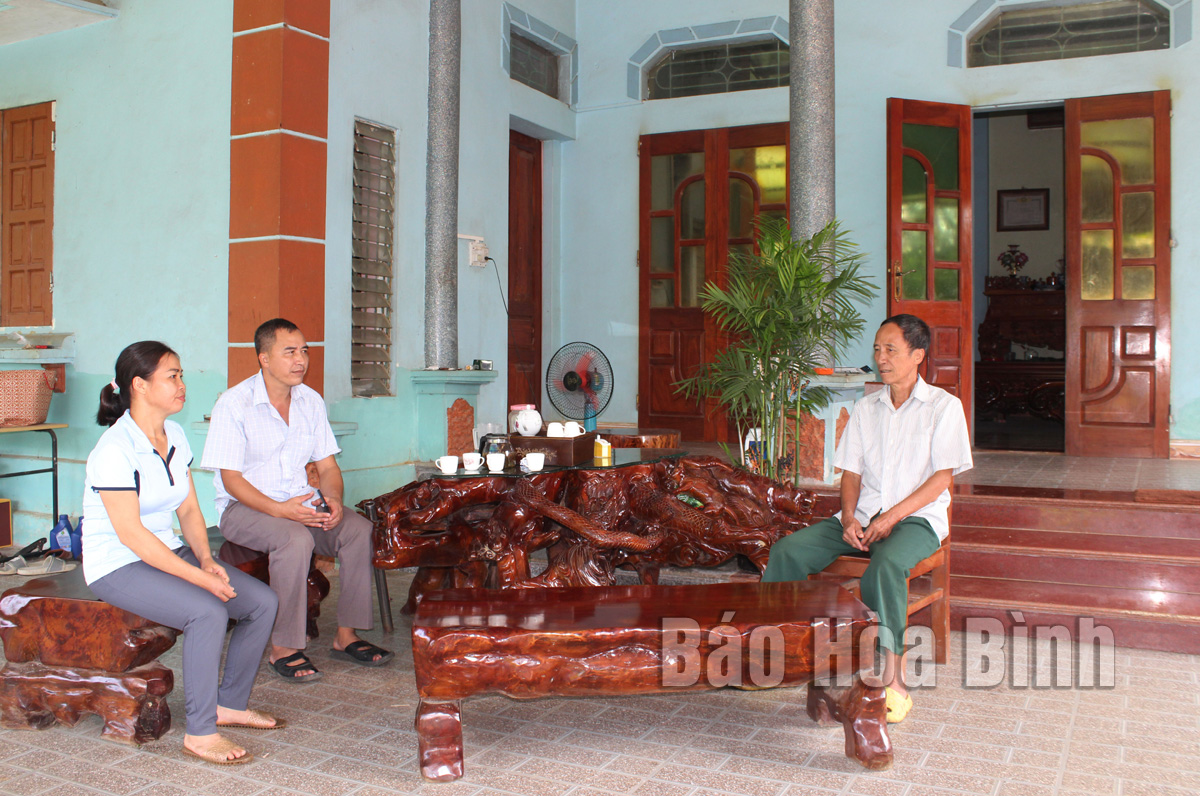
(HBO) – Bu Cham, formed from a merger of Phu Chau and Bu Cham villages, cover nearly 800 hectares. The village has 157 households with nearly 700 people, of which the Muong ethnic group accounts for 75% of its population. In addition to natives, 20% of the population are residents of Hanoi’s outlying districts suburban who settle here.
The family of Do Van Truong who resides in Bu Cham village, Hoa Binh city’s Thinh Minh commune, is recognised as an outstanding cultural family.
As its economy largely relies on agricultural production, Bu
Cham village is developing a number of crops and forming a concentrated
production area for high economic efficiency. Dong rieng (Canna edulis Ker –
Gawl) is the main crop with an area of 175ha and an average yield of 45 tonnes
per hectare.
After deducting all expenses, farmers can earn about 70 million VND (2,810 USD)
per year for each hectare of dong rieng.
Besides dong rieng, the village also engaged in horticulture, mainly pomelo and
herbal plants such as ca gai leo (Solanum procumbens). Currently, it has 20
hectares of pomelo and 16 hectares of cassava. Households earn about 300
million VND in profit for each hectare of pomelo.
Thanks to investment in machinery and equipment, some households
can earn about 600 VND per year from each hectare of ca gai leo.
Currently, there is a vermicelli production facility, a broom-making workshop,
some groups engaging in making bamboo and rattan products and two groups on construction
in the locality.
Other side trades create jobs for over 100 regular workers and many seasonal
ones with an average income of between 5and 6 million VND per month.
Locals’ living standards have improved over the years. Last year, the per capita
income of the village reached 55 million VND. About 65% of households became
better off and there were only two poor households.
Nguyen Vu Luc, head of Bu Cham village, said that people's livelihood has been
improved. The movement on new-style rural area building, especially the
"Clean house, beautiful garden, fresh environment, civilised alley",
was enthusiastically responded by local residents. Locals have donated land and
contributed working days to build roads and works in the village.
Health and education issues are also taken care of, he said,
adding that over 90% of the households meet the standards of cultural families. Last year, Bu Cham village took the lead in the emulation movement of 14
hamlets of Thinh Minh commune, and the village’s party cell was honoured as
excellently fulfilling its task./.
More than just an information technology teacher, Bui Van Nien is an inspiring figure who has nurtured the scientific curiosity and creative spirit of students in Vietnam’s ethnic minority communities.
Da Bac is the most disadvantaged mountainous district in Hoa Binh province, with ethnic minorities accounting for about 90% of its population. Over the past years, the district has mobilised resources to implement ethnic policies to improve the quality of life of local people.
In recent years, Hoa Binh province has consistently prioritised the protection, care, and education of children, particularly those from ethnic minorities and disadvantaged backgrounds, by creating a safe, healthy, and nurturing environment for their all-round development.
The Steering Committee for Tobacco Harm Prevention and Control of Hoa Binh province, in coordination with the Tobacco Harm Prevention and Control Fund, held a ceremony on May 28 in response to the World No Tobacco Day (May 31) and the National No Tobacco Week (from May 25 to 31). The event was chaired by Nguyen Van Toan, Standing Vice Chairman of the provincial People’s Committee and head of the Steering Committee.
Since 2021, the Center for Industrial Promotion and Industrial Development Consulting (CIIDC) under the Department of Industry and Trade has been implementing a school lighting model as part of the plan for using energy efficiently and economically in Hoa Binh Province in the pẻiod of 2021 - 2025. This model not only aims to improve the learning conditions and enhance the education quality, but it also promotes the message of energy saving, energy security, environmental protection and contributes to the goals of socio-economic development.
In the 2024 - 2025 school year, the entire Hoa Binh provincial education sector includes 520 educational institutions and schools. Among them are 13 ethnic boarding schools with 153 classes and 4,487 students. Four of these schools have met national standards, reaching 30.7 percent.



